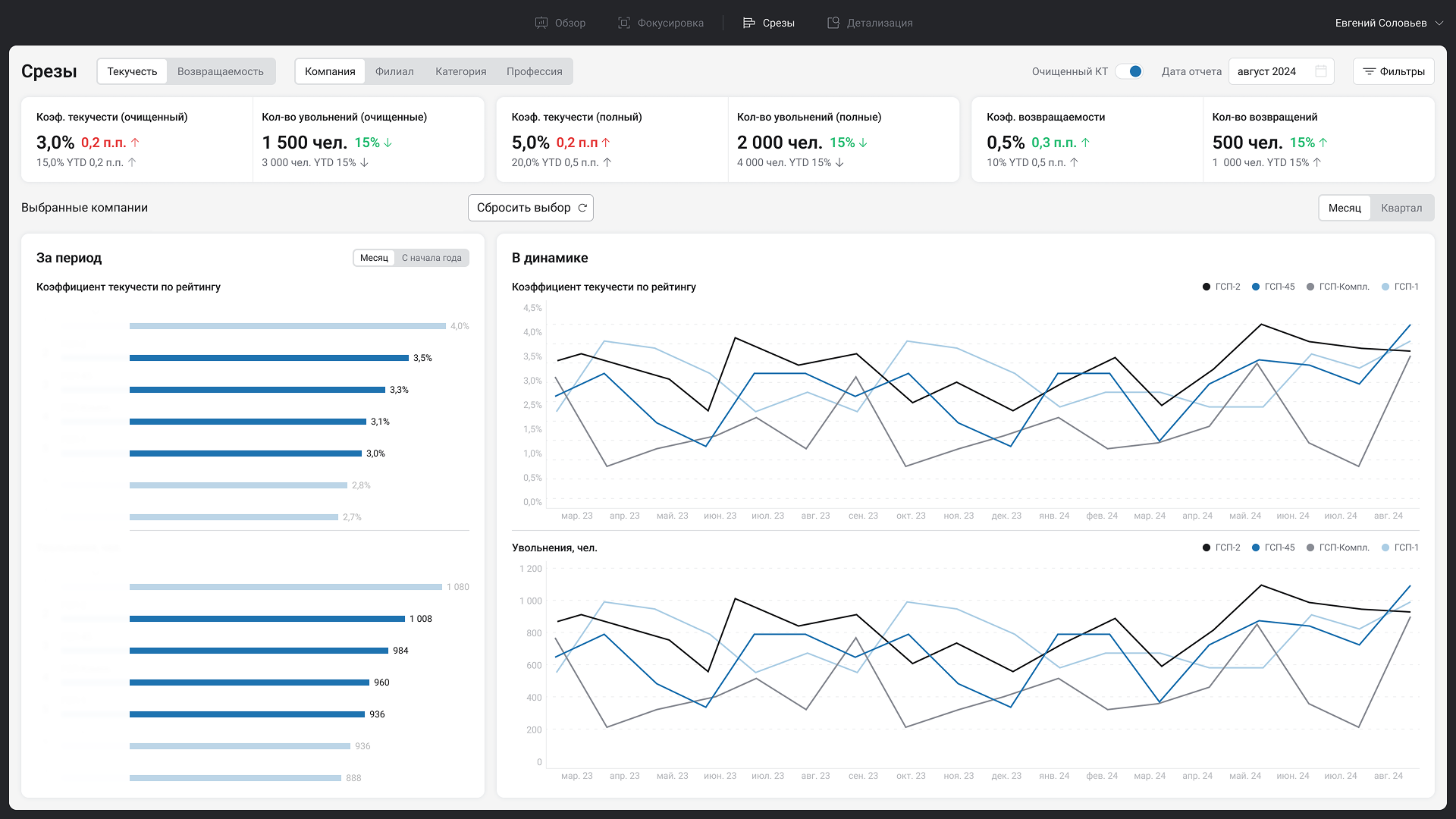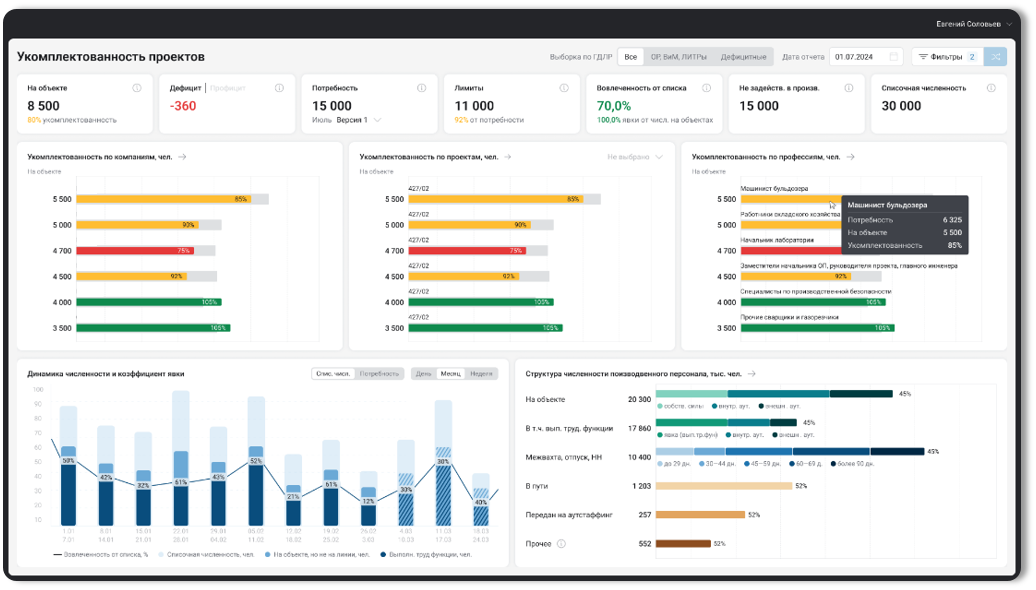OpenForm by abgroup.tech — Reporting Automation System | Russian SW Registry

Reimagining the Approach to Data in the HR Sector as a Strategic Asset of the Company
In the context of modern business, data is becoming a key asset, especially in the HR sector. The team at abgroup.tech is focused on implementing HR process analytics in enterprise-level companies with more than 1,000 employees. The main tasks for analytics include employee turnover and attendance.
Employee Turnover: Financial Consequences and Analytics
Research shows that high turnover can cost a company up to 200% of the annual salary of the departing employee. For example, according to the Society for Human Resource Management (SHRM), the cost of replacing one worker can range from 50% to 200% of their annual salary, depending on the level of the position and the specifics of the job.
By using correlation analysis methods, companies can determine which factors (such as salary level, career advancement opportunities, or shift work) have the most significant impact on employees' decisions to leave the organization.

Employee Attendance: Impact on Productivity
Employee attendance at work sites is also critically important; low attendance rates can reduce productivity by 20-30%.
Analytics Culture in HR
To turn data into a strategic asset, it is essential to create a culture based on analytics. This includes:
1. Training HR specialists in data analysis methods and result interpretation.
2. Implementing analytics visualization tools, such as corporate analytics portals tailored to client requirements.
3. Investing in modern HR technologies, including talent management systems, and integrating them into the analytics portal.
According to Deloitte, companies with advanced HR analytics show 5-6% higher performance and employee retention rates.

Predictive Analytics: Forecasting Employee Behavior
By analyzing data on employee turnover, companies can develop retention strategies such as mentorship programs, employee incentives, or skills training, which helps reduce turnover by 10-15%.
Optimizing Hiring Processes
HR departments can enhance recruitment strategies by applying algorithms for resume evaluation. This allows for a 30% reduction in hiring time and improves the quality of candidate selection.
Employee Engagement: Data as a Foundation for Improvement
Data on employee engagement is collected through surveys and feedback, helping organizations develop targeted engagement enhancement programs. Research shows that a 10% increase in engagement can lead to a 2-3% increase in productivity.
Creating a culture based on analytics and investing in modern HR technologies helps organizations extract maximum value from data. Predictive analytics and data-driven optimization of hiring processes contribute to reducing turnover and improving the overall atmosphere within the team. The effective use of employee data enables companies to transform it into a strategic asset that supports the achievement of business goals.
.jpg&w=1024&q=75)